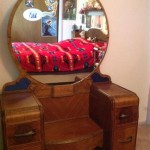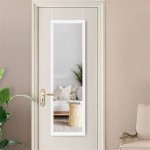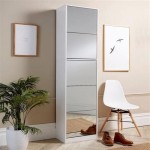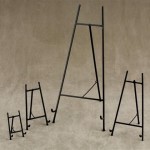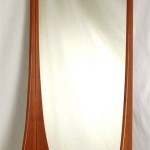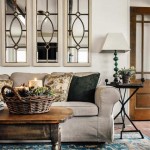Decorative Convex Mirrors
Decorative convex mirrors serve a dual purpose: they enhance a room's aesthetic appeal while also offering a unique functional perspective. Their curved surface creates an illusion of expanded space, making them a popular choice for interior design. Understanding their history, diverse styles, placement strategies, and maintenance can help homeowners effectively integrate these versatile pieces into their décor.
Convex mirrors have a rich history, dating back centuries. Early examples, crafted from polished metal, served primarily as reflective surfaces. During the Renaissance, the development of glassblowing techniques allowed for the creation of curved glass mirrors. These became popular decorative elements in grand European homes, often incorporated into ornate frames and used to accentuate architectural details. The convex shape, providing a wider field of view than flat mirrors, also offered a practical advantage for monitoring activities within a room or even approaching visitors from a distance.
A wide array of styles caters to diverse design preferences. Antique convex mirrors, often featuring elaborate frames crafted from materials like gilded wood or wrought iron, bring a sense of history and old-world charm. More contemporary designs utilize simpler frames, focusing on the mirror's reflective qualities and the interplay of light within a space. Frame materials range from sleek metals like chrome and brass to natural materials like wood and bamboo, offering options that complement various interior design schemes, from traditional to modern and minimalist.
Frame shapes further contribute to the mirror's overall aesthetic. Round convex mirrors are a classic choice, offering a timeless elegance. Oval and rectangular shapes can add a touch of formality, while more unconventional shapes like octagons or sunbursts introduce a playful and dynamic element. The size of the mirror also plays a significant role in its impact. Smaller convex mirrors can be grouped together to create a gallery wall, while larger ones can serve as a striking focal point above a fireplace or console table.
Strategic placement maximizes both the aesthetic and functional benefits of decorative convex mirrors. In smaller rooms or hallways, they can create the illusion of spaciousness by reflecting light and visually expanding the area. Placed opposite a window, a convex mirror can bring the outdoors in, reflecting natural light and greenery. They can also be used to highlight a particular architectural feature or piece of artwork, drawing attention to specific elements within a room.
Consider the existing décor when selecting a placement. A large, ornately framed convex mirror can serve as a statement piece in a traditionally styled room, while a smaller, minimalist design might be more suitable for a contemporary setting. Avoid placing convex mirrors in areas where they might reflect undesirable views or create distracting reflections. Careful consideration of the surrounding environment ensures the mirror enhances the overall aesthetic rather than detracting from it.
Maintaining decorative convex mirrors requires minimal effort. Regular dusting with a soft, dry cloth is typically sufficient to keep the surface clean and reflective. For more stubborn dirt or fingerprints, a slightly damp cloth can be used, followed by immediate drying to prevent water spots or damage to the frame. Avoid using harsh cleaning chemicals or abrasive materials, as these can scratch the mirror's surface or tarnish the frame.
For antique or intricately framed mirrors, specialized cleaning methods may be necessary. Consulting a professional conservator is recommended to ensure the preservation of these delicate pieces. Regular inspection of the frame for signs of wear and tear, such as loose joints or chipping paint, is also important. Addressing these issues promptly can prevent further damage and maintain the mirror's overall integrity.
The versatility of decorative convex mirrors extends beyond their reflective qualities. They can serve as functional pieces, offering a wider field of vision in areas like hallways or entryways. Their ability to create an illusion of space makes them a valuable tool in interior design, particularly in smaller rooms or apartments. From antique to contemporary, the diverse range of styles available ensures that there's a decorative convex mirror to complement any design aesthetic.
Choosing the right convex mirror involves considering various factors, including size, frame style, and placement. Understanding the intended function of the mirror, whether it is primarily decorative or intended to enhance the perception of space, will guide the selection process. By carefully considering these elements, homeowners can effectively integrate decorative convex mirrors into their décor, adding both beauty and functionality to their living spaces.
Integrating decorative convex mirrors into a room’s design presents a unique opportunity to blend aesthetics and functionality. Understanding the interplay of size, style, and placement allows for a thoughtful approach to incorporating these versatile pieces, ultimately enhancing the overall ambiance and visual appeal of the space.

Home Decorators Collection Round Convex Mirror In Gold 24 D H5 Mh 240 The Depot

Antique Glass Convex Mirror For Living Room Decor

Silver Convex Mirror With Brushed Brass Frame Hand Crafted Wall Space Age Decor Contemporary Curve

Convex Mirror Archives Omelo Mirrors Decorative

Celestial Original Handmade Convex Mirror Bespoke Mirrors Art Deco Custom Made

Alastair Convex Mirror Ballard Designs Gallery Wall Decor

Large Fish Eye Convex Mirror Classic Design Omelo Mirrors Decorative

Antiqued Convex Mirror With Brass Clips Hand Crafted Wall Curve Decor Space Age

Large Round Convex Mirror Hand Finished Omelo Mirrors Decorative

Broe Convex Mirror With Brushed Brass Frame Hand Crafted Wall Space Age Decor Contemporary Curve

